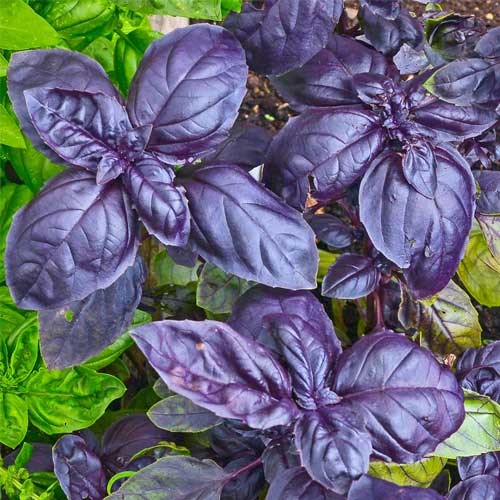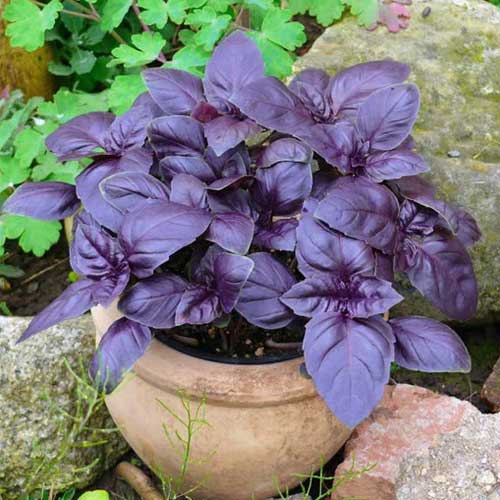Total Number of seeds: 200
Basil Purple Seeds produce compact, bushy plants with small to medium-sized leaves that are rich in aroma. The leaves have a striking purple color, making them not only a flavorful herb but also a visually appealing addition to any garden. This variety is easy to grow and matures quickly, producing vibrant, aromatic foliage in just 30-35 days. Basil Purple can be used fresh or dried in a variety of dishes, adding a beautiful color and unique taste to salads, pasta, and pesto.


In India, Basil Purple Seeds can be sown year-round. These plants thrive in warm, sunny weather and produce vibrant, colorful leaves that are perfect for adding beauty and flavor to your garden or dishes.
1. Apply Nutrient-Rich Fertilizers
When your plants begin flowering, use nutrient-rich fertilizers like Organic Bone Meal Powder or Vermicompost. This helps in boosting the bloom and enhances overall yield.
2. Use Organic Fertilizers
Feed your plants with organic fertilizers such as Cow Dung Manure or Neem Cake. Organic options promote healthy soil life.
3. Regular Feeding
Apply fertilizers every 20-25 days to ensure plants receive a steady supply of nutrients. Choose from various options like Cocopeat Compost for moisture retention.
Basil Purple is known for its beautiful, deep purple leaves and strong aroma. This variety is not only prized for its culinary uses but also for its ornamental value, as the colorful foliage adds visual appeal to any garden or container. The leaves can be used fresh or dried in various dishes.
Purple basil is rich in antioxidants and essential oils, making it a healthy addition to any meal. The leaves can be used fresh in salads, as a garnish, or dried for making herb blends. They are also great for making unique purple pesto or adding color to drinks and desserts.
When growing Basil Purple Seeds, ensure the soil is loose and well-draining. Water regularly to keep the soil moist but avoid waterlogging. Monitor for pests and diseases to keep the plants healthy.
Common issues include pests like aphids and diseases like powdery mildew. To prevent these problems, ensure good airflow and use organic pest control methods. Remove affected leaves to avoid disease spread.
Sign in now to receive a 5% instant discount on your first order when using code WELCOME. Begin your organic journey today!
By logging in, you're agreeing to our Terms of Service and Privacy Policy.
Priya
Sunlight full mila toh purple color aur intense ho gaya, pot decoration ke liye best hai.
Yash
Soil slightly moist rakhna pada aur plant ne thick foliage diya in 30 days.
Kunal
Container garden mein lagaya aur har morning sunlight ke baad leaves aur dark ho gaye.
Geeta
Neem spray weekly use kiya aur pest attack se plant safe raha, no wilting problems at all.
Ranjit
Seedling stage mein daily watering se fast leaf formation hua, easy maintenance bhi tha.
Divya
Cut and regrow system kaam kiya—ek harvest ke baad doosri growth jaldi aayi.
Rahul
3★—ek pot mein growth slow tha but baaki sab plants strong aur upright hue.
Manish
Purple tone kaafi deep tha, aur plant ne fragrance bhi diya jab breeze aayi.
Payal
Daily light ke saath color deepen hota gaya—ornamental aur edible dono mein fit baitha.
Meera
Compost-rich mitti use ki aur watering regular kiya toh growth continuous chali.